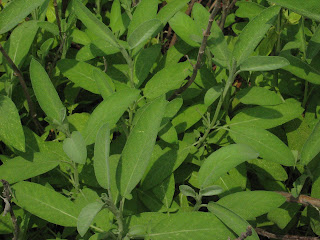
“He’s taking the labels off,” my husband said, pulling me back.
“Who’s taking the labels off what?” I asked.
“Look,” he said again. “He is taking those tomatoes out of those boxes and taking the labels off.”
“What?” I asked. And sure enough this man, a worker, was taking big, red ripe tomatoes out of boxes labeled New Jersey tomatoes and after removing the labels, he was putting them in a display container ready for the farm shop.
“Excuse me,” I said. “I thought that you only sold local produce here, from the farm at the back.”
“Ah,” he smiled. “These are from New Jersey.”
“Yes, I see that. Why are you taking the labels off?”
“Because we mix them with the local ones,” he explained, as though it were normal.
Well, no point having a go at him, he only worked there and was doing what he was told.
I went inside the shop and asked the cashier if the owner was there.
“No, they are never here on a Sunday.”
“I want to buy local tomatoes, and now I discover that they are from New Jersey.”
“Not all of them.”
“Well how can I tell the difference since they are all mixed in together?”
“The local ones are the ugly ones,” she explained.
“I would like you to tell the owner that some of us want to buy local products. Some of us don’t like to buy food that has traveled a long way and drunk a lot of gas to get here. And I came here because I thought that the produce sold was from the fields at the back.”
“I will,” she said; bless her, she was a bit shocked.
But so was I. On my way back from showing a house a few years ago, I took a different route back home and saw the farm. I parked, went in, bought a few bits and pieces and forgot all about it. Until… you’ve guessed. Until I started my save the Earth effort. Then I remembered that farm and rushed back there with my husband, because my own three cherry tomato plants only give us a few offerings every few days, and delicious and organic though they are, we can’t quite make a meal out of them. Maybe a bruschetta, but that’s about it. Besides, one needs other fruit and vegetables as well.
I was so happy the first time I went back.
“Look, Darling,” I gushed. “It is all so fresh, just picked and brought in from the fields.”
I could hardly contain myself as I filled my trolley with red chard, cilantro, tomatoes, nectarines, grapes and a new discovery: roly-poly. I couldn’t wait to get home to cook and I must confess that local or not, the roly-poly was good. But that’s not the point. The point is that I thought I was buying produce grown less than a hundred miles from where I live.
When the idea came to me that I could help reduce my family carbon foot print by eating locally and to grow a few vegetables in my garden, it seemed like a simple enough thing to do. And to some extent it is, you have to eat what is in season where you live (how will I manage without avocados, I love them). And of course you have to relearn what grows when.
What I was not prepared for, was that I would find it necessary to almost radically change my and my family eating habits. And this is because as a result of what I am trying to do, I am learning a lot about the food industry that is difficult to stomach, as well as how what we eat affects our mind and spirit as well as our body. We truly are what we eat. More on that as we continue on.
But for now let me tell you about roly-poly; they are zucchine (remember that in Italian it is zucchine, not zucchini). As the name implies roly-poly are round and fat, they are firmer than the regular zucchine and also almost seedless. I slice them, drizzle them with olive oil, sprinkle some salt, a pinch of oregano, or rosemary or both, or anything else you fancy, and bung them under the grill. Great mixed in with couscous, on top of warm, crusty bread, or as a pasta or polenta topping ………. Buon Appetito!
Bye for now,
Esmeralda







